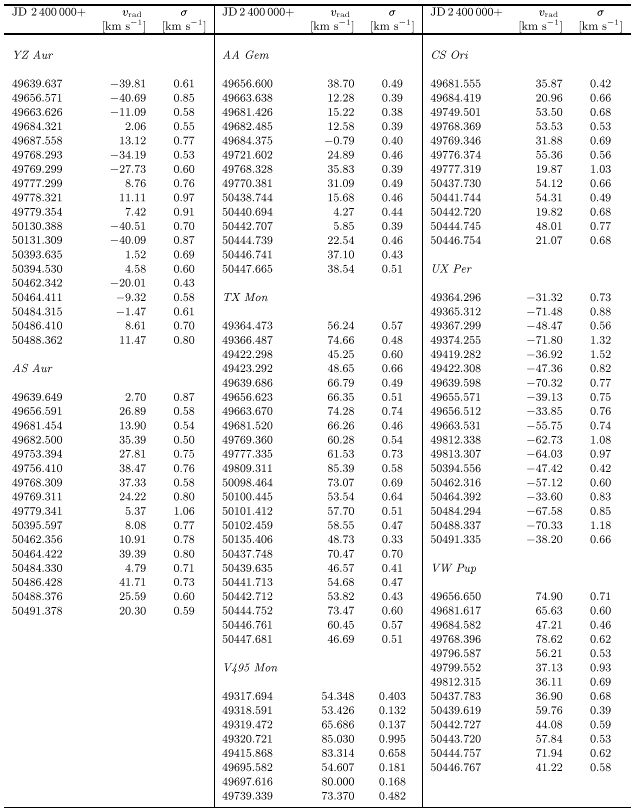The modern radial velocity spectrometers (CORAVEL, ELODIE, etc.)
attached to a telescope of about 1m diameter are capable of
measuring stars of 12-13th magnitude within a reasonably short time,
and the precision of the radial velocity determination allows
the detection of very small orbital effects (less than one km s-1
change in the ![]() -velocity), if homogeneous datasets covering
several seasons are available. The shortest known orbital period
for classical Cepheids is slightly longer than one year (Szabados
1992), while the other extremum, the longest still detectable
orbital period is as long as several decades (T Mon).
-velocity), if homogeneous datasets covering
several seasons are available. The shortest known orbital period
for classical Cepheids is slightly longer than one year (Szabados
1992), while the other extremum, the longest still detectable
orbital period is as long as several decades (T Mon).
The earlier radial velocity data of limited precision are useful
for revealing the orbital motion if there is only a short dataset
of recent radial velocity values, which is the case for the stars
discussed in the present paper. The next step, then, is the extensive
study of these newly recognized spectroscopic binaries. For the time
being, none of the orbital elements can be determined from the
available data. There are, however, several pieces of information
that can be deduced from the pattern of the ![]() -velocity
change, such as the short orbital period of TX Mon and the
several-year-long orbital period is adequate to the observations
of VW Pup. All Cepheids whose binary nature is reported here
show considerable amplitude of
-velocity
change, such as the short orbital period of TX Mon and the
several-year-long orbital period is adequate to the observations
of VW Pup. All Cepheids whose binary nature is reported here
show considerable amplitude of ![]() -velocity variation
(only V495 Mon may be an exception). For the
sake of information, the new radial velocity data on the
eight new SB-Cepheids obtained by the CORAVEL and ELODIE
spectrographs are listed in Table 9.
-velocity variation
(only V495 Mon may be an exception). For the
sake of information, the new radial velocity data on the
eight new SB-Cepheids obtained by the CORAVEL and ELODIE
spectrographs are listed in Table 9.
The detection of numerous spectroscopic binaries among Cepheids justifies that the time-consuming project of collecting radial velocity data of Cepheids is an observational programme worthy to be carried out because binary Cepheids are key-objects for both astrophysics (stellar evolution) and cosmology (distance scale).

|
This project has been partly financed by Hungarian OTKA-project T022946. L.Sz. is grateful to Dr. Mária Kun for her remarks contributing to the improvement of the manuscript.
Copyright The European Southern Observatory (ESO)